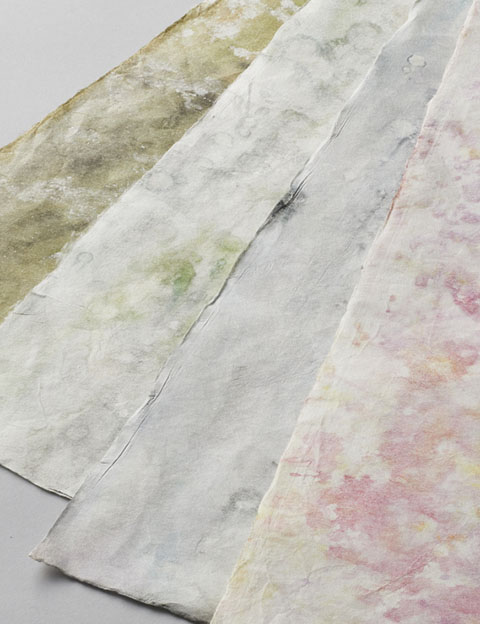TOSA Washi (Papers)

Tosa washi paper is mentioned in the Engishiki, an official Heian era (794-1185) document, indicating that Tosa was already a paper production center during this period.
With plentiful supplies of raw materials, papermaking flourished, and during the Edo era, colorful nanairo-gami paper from Tosa was presented to the Shogunate. By the beginning of the 20th century, Tosa was the country's largest paper producer, and today it is one of the country's most advanced areas for the production of handmade washi paper.
Tosa has an abundant supply of trees perfectly suited for papermaking as well as a long tradition of skilled craftsmanship, which ensures a consistently high-quality product. A wide variety of paper for art, calligraphy, shoji screens and more is handmade one sheet at a time.
Feature
The entire papermaking process, including harvesting the raw materials and making the necessary tools, takes places in Tosa. The area’s abundant high-quality paper trees are what makes Tosa’s washi paper superior to others. In addition, each local producer creates different kinds of paper, resulting in the vast range of products that is characteristic of Tosa washi paper.
How to make
First, the skin of papermaking plants, including paper mulberry, edgeworthia, gampi, hemp and straw, is cleaned and boiled. After washing away the non-pulp and alkaline components, the remaining portion is bleached, cleaned and pounded to extract the pulp, which will become the paper. A starchy substance from sun hibiscus (tororo aoi) is mixed into the paper solution to increase viscosity. The pulp is agitated using the nagashi-zuki or tame-zuki technique to form a sheet of paper.

